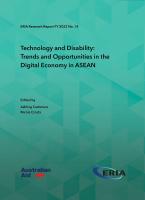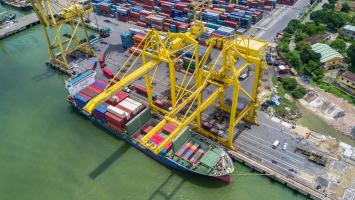New COVID-19 variants and delayed vaccine rollout remain the biggest risk to the outlook.
The Asian Development Bank (ADB) has lowered growth outlook for Southeast Asia to 4.0% in 2021 compared with an earlier forecast of 4.4% as curbs to fight the resurgence of coronavirus disease (COVID-19) infections dampened economic activity.
In a supplement to its flagship Asian Development Outlook (ADO) 2021 which came out in April, ADB slightly upgraded growth outlook for 2022 to 5.2% from 5.1%, reflecting higher vaccination coverage expected by next year.
Southeast Asia’s gross domestic product contracted by 4.0% in 2020 as the pandemic battered economies.
ADB lowered the outlook for developing Asia this year to 7.2% from 7.3% following renewed virus outbreaks in some economies. Next year, the forecast is upgraded from 5.3% to 5.4%. Developing Asia refers to the bank's 46 members, including the Peoples’ Republic of China and India.
“Asia and the Pacific’s recovery from the COVID-19 pandemic continues, although the path remains precarious amid renewed outbreaks, new virus variants, and an uneven vaccine rollout,” said ADB Chief Economist Yasuyuki Sawada in a release. “On top of containment and vaccination measures, phased and strategic rejuvenation of economic activities—for instance, trade, manufacturing, and tourism—will be key to ensure that the recovery is green, inclusive, and resilient.”
Country outlooks
In Southeast Asia, ADB downgraded forecasts for Indonesia, the Lao People’s Democratic Republic, Malaysia, Thailand, Timor-Leste, and Viet Nam. Outlook for Brunei Darussalam, Cambodia, Myanmar, and the Philippines was unchanged. Singapore’s outlook was upgraded.
Over the past months, Southeast Asia has seen a resurgence of infections, which is projected to dampen economic activity. As of 26 July, Southeast Asia has reported 37.6 million confirmed cases and 550,934 deaths, according to data from the World Health Organization.
Indonesia’s growth forecast is cut to 4.1% from 4.5%. Outlook for 2022 remains at 5.0%. The country has seen a second wave of infections, which have hit record highs. The consequent lockdown is expected to dampen ongoing recovery.
The growth forecast for Malaysia is revised down to 5.5% from 6.0%. The forecast for 2022 is kept at 5.7%. Malaysia posted a smaller year-on-year decline of 0.5% in gross domestic product in the first quarter as domestic demand and exports, particularly of electronics and electrical products, improved. However, with infections continuing to rise, an extension of lockdown measures imposed in the second quarter is expected to weigh on domestic demand.
The outlook for Thailand is downgraded to 2.0% from 3.0%. Forecast for 2022 is raised to 4.9% from 4.5%. The Thai economy shrank by 2.6% year on year in the first quarter as private consumption and service exports continued to fall. Tourism continues to be bleak, with arrivals in January–May 2021 plunging 99% year on year, to 34,753.
Viet Nam’s growth forecast is revised down to 5.8% from 6.7%. Outlook for 2022 remains at 7.0%. Viet Nam saw its economy grow 5.6% in the first half of this year from 1.8% in the same period in 2020 as global recovery boosted exports, and despite disruption caused by a new wave of COVID-19 starting in late April. However, vaccination delays and an extended lockdown in the country’s largest growth area may slow economic activity in 2021.
In the Philippines, forecast is maintained at 4.5% in 2021 and 5.5% in 2022 as sustained government spending on infrastructure and social assistance programs supports recovery as well as a gradual pickup in household spending, aided by strong remittances.
As global recovery continues, the outlook for Singapore is upgraded to 6.3% from 6.0% and maintained at 4.1% for 2022.
The report forecasts inflation in Southeast Asia to be slightly lower at 2.3% in 2021 and unchanged at 2.4% in 2022 as consumer demand remains weak. However, higher international oil prices are applying pressure on prices for goods and services.

